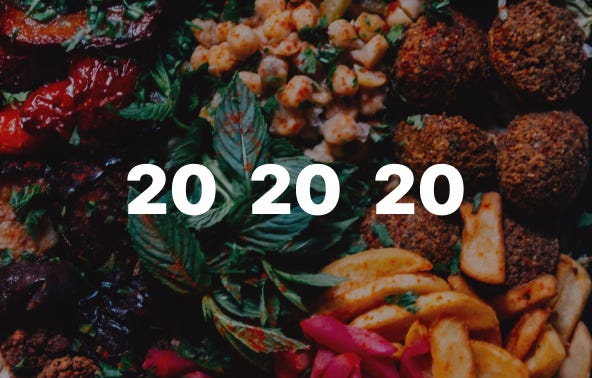Does anyone know about the 20-20-20 Rule?
As the co-creator of 80Bites—our program built on the idea that the human mouth only needs about 80 bites of food a day—I probably should have known more about the 20-20-20 rule. My co-creator, Meredith Luce, a Registered Dietitian with more degrees than a thermometer, definitely mentioned it. Meredith specialized in bariatric surgery, where patients often weighed 400+ pounds, and for them, the rule was critical.
Here’s the breakdown:
First 20: A meal should be around 20 bites. That’s about right. For example, one slice of pizza is 12 bites (yes, you can do it in 9, but the human mouth is self-limiting—unlike an alligator’s). Salads might seem “healthy,” but if you pile on endless bites, the calories (and hormones) add up.
Second 20: Take a 20-second pause between bites. This one always gets me. Imagine putting your utensil down every single bite. For fast eaters who inhale a pizza or a tub of ice cream, 20 seconds feels like an eternity. But that pause is powerful: it slows you down, reduces overeating, and retrains you to eat like a human, not like a cow grazing nonstop.
Third 20: Meals should last 20 minutes. For chronic speed eaters, that’s practically forever. But the science is sound—stretching meals to 20 minutes lets hormones signal satiety. That’s when you can finally say: “It’s delicious, but I couldn’t eat another bite.”
Now, here’s why this matters for 80Bites: the 20-20-20 approach reinforces what we’ve been teaching all along. It’s not about counting calories (hormones rule, not calories). It’s about how much you eat, how fast you eat, and whether your stomach is stretched beyond its natural limits. Once it stretches, food noise takes over—and you’re stuck in a cycle of nonstop cravings.
We learned this the hard way. Back in 1987, when Self magazine ran a five-page feature on our program (then called Diet Directives), the world wasn’t ready. Nutrition talk back then focused on “good food vs. bad food,” ignoring the basic truth: your stomach doesn’t know kale from cookies—it only knows volume.
Over time, the fads shifted: from calories, to “low fat,” to “fitness plus nutrition,” and now “wellness.” But the underlying problem hasn’t changed: we eat too much, too fast.
For perspective: after bariatric surgery, your stomach is the size of a toddler’s. It can stretch to hold four cups of food—but it shouldn’t. Just one and a half cups is ideal. The 20-20-20 rule was designed to protect that fragile balance, but it’s useful for everyone.
There are even variations, like chewing each bite 20 times. In the 1930s, a health guru named Horace Fletcher taught the rich and famous (Rockefeller, Vanderbilt, Astor) to chew every bite 32 times. Few could keep it up, but some still do. Chewing slowly isn’t trendy, but it works—and 80Bites teaches people how to rediscover it.
The 20-20-20 rule is more than a bariatric trick—it’s a tool for anyone ready to rethink eating. Every time it gets publicity, it helps people understand what 80Bites has been saying all along: stop obsessing over what you eat, and start noticing how much and how fast. That’s the path back to balance.


